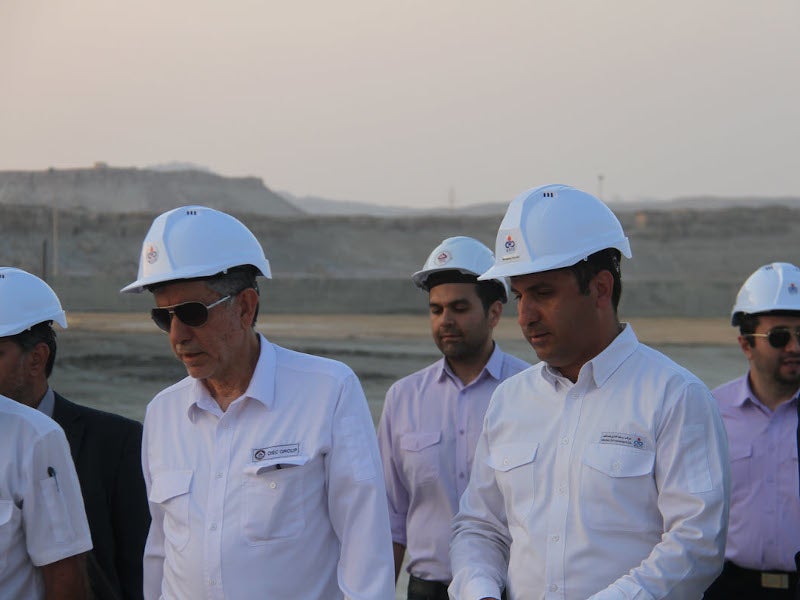The Qeshm oil terminal is a major oil export terminal being developed in the historic Qeshm Island that lies along the strategically important trade route of the Strait of Hormuz, off the southern coast of Iran.
The £194m ($251m) project includes the construction of 13 crude oil and gas condensate storage tanks with a total storage capacity of 6.5 million barrels (Mbl).
The massive oil export terminal project is being developed two phases by the Qeshm Oil Investment Company, a subsidiary of Petroleum Engineering and Building Industries.
In phase one, six storage tanks with 3.24Mbl of total storage capacity were built with an investment of £97.3m ($126m). The phase one facility was commissioned in September 2020.
Construction is underway on phase two, which will further add a 3.24Mbl of storage capacity with seven additional storage tanks that are scheduled for commissioning in 2021.
Location and site details
The Qeshm oil terminal project site is spread over 378 acres within the 300km2 Qeshm Free Zone on the Qeshm Island near Direstan in the Hormozgan province of Iran.
The Qeshm Island, the biggest Iranian island in the Persian Gulf, is located off the southern coast of Iran opposite the cities of Bandar Abbas and Bandar Khamir. It is approximately 180km from the UAE Port Rashid.
The Qeshm Island is home to a number of oil and gas fields holding significant reserves to feed the refinery and petrochemical units.
Qeshm oil terminal details
The first phase of the Qeshm oil terminal consists of six oil and gas condensate storage tanks of 540,000 barrels capacity each.
The proposed phase two will include seven more storage tanks, of which five will have 540,000 barrels of storage capacity each, with the remaining two will have 270,000 barrels of storage capacity each.
The terminal is capable of loading and unloading very large crude carriers (VLCCs) and ultra-large crude carriers (ULCC).
A single-point mooring (SPM) system, located 4km from the coastline, facilitates loading/unloading of crude oil between the onshore storage tanks and oil tankers via two 36in, 8km-long onshore pipelines, and one 36in, 4km-long subsea pipeline with a transfer capacity of 9,000 cubic metres per hour.
The seawater for the terminal’s firefighting system is supplied via an 8in, 8km-long pipeline.
A pipeline end manifold (PLEM) subsea structure is installed to tie-in the main terminal pipelines with the external pipeline network.
Transportation of oil and gas condensate from the Qeshm oil terminal
The oil and gas condensate at the Qeshm oil terminal will be supplied via a 16in-diameter, 22km-long pipeline to the Gorzin refinery.
The pipeline will also carry oil products from the terminal to the Bandar Abbas refinery, which has a refining capacity of 340,000 barrels per day (b/d), and the Persian Gulf Star (PGS) condensate splitter project, which has a capacity of 480,000b/d.
Contractors involved
Qeshm Oil Investment Company, through Iranian Oil Terminals, awarded a contract to Oil Turbo Compressor Construction Company (OTCC) for the construction of storage facilities and onshore transmission lines.
The scope of the contract includes engineering, procurement, construction, and commissioning (EPCC) of storage tanks, 25km of the power transmission line, and 8km of oil pipelines.
Rah Gostar Naft (RGNC), a subsidiary of Oil Industry Investment Company (OIIC), provided EPC services for 4.1km of subsea pipe laying as well as for the installation of SPM and PLEM systems.
Soroush Energy Pooya Company (SEP) provided project management consultancy (PMC) services for the Qeshm oil terminal phase one.
Qeshm oil terminal background
National Iranian Oil Refining and Distribution Company (NIOC) and Oil Industry Investment initially signed a contract to set up a 300,000bbl oil storage facility to feed the Bandar Abbas refinery in 2005.
The contract was canceled due to delays in the Bandar Abbas refinery development.
Later in 2010, NIOC and Qeshm Oil Investment Company signed a new contract for the lease of oil storage tanks in 2010.
The 6.5Mbl Qeshm oil terminal is intended to boost Iran’s crude oil export capacity while increasing its storage and ship bunkering capacity near the mouth of the Persian Gulf.





